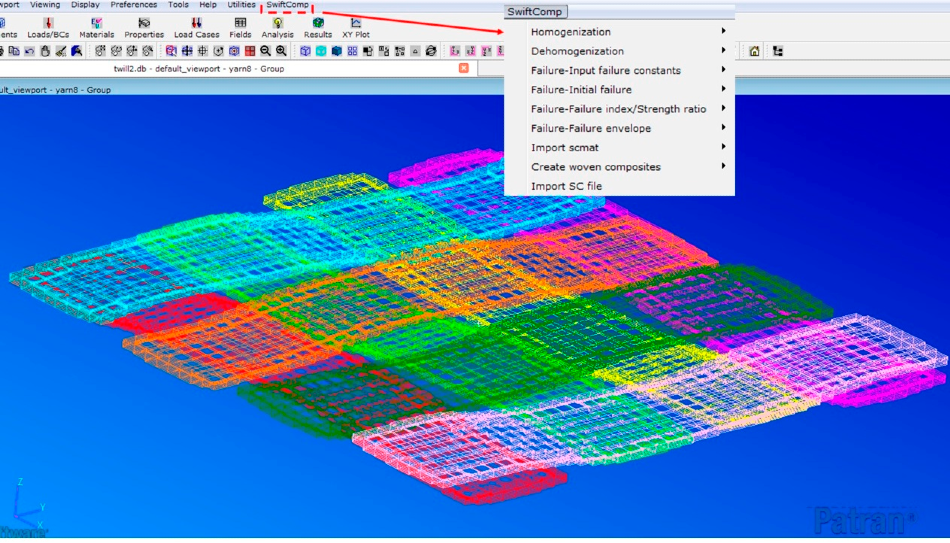Xin Liu, Graduate Research Assistant at Purdue University, recently authored an article describing the MSC.Patran/Nastran-SwiftComp™ GUI: A plugin for multiscale modeling of composite materials and structures. The software is an open-source, third party software developed to integrate SwiftComp into MSC.Patran/Nastran, powering the conventional structural code tool with accurate constitutive modeling for anisotropic, heterogeneous materials and structures.

The MSC.Patran/Nastran-SwiftComp GUI was developed by the Multiscale Structural Mechanics research group at Purdue University and is available on Purdue’s Composite Design & Manufacturing Hub (cdmHUB), where users may access the software after creating a free log-in. Video tutorials are available on the AnalySwift YouTube channel.
This multiscale modeling module is developed based on the recently invented theory called Mechanics of Structure Genome (MSG), which is implemented into SwiftComp. The MSC.Patran/Nastran-SwiftComp GUI provides the automated conversion of the MSG plate and beam stiffness matrix into MSC.Nastran shell and beam element properties and materials. In order to reduce the modeling efforts for creating complex microstructures of woven composites, the code TexGen has been integrated into the GUI. This provides a rapid textile composite microstructure generation for constitutive modeling.
SwiftComp is a general-purpose multiscale modeling code that enables users to perform efficient and accurate modeling of composites. It enables engineers to model composites as an effective homogeneous continuum, capturing details as needed and affordable, while saving hours in computing time and resources with accuracy comparable to modeling all the microstructural details using 3D FEA. It can be used either independently as a tool for virtual testing of composites or as a plugin to power conventional FEA codes with high-fidelity multiscale modeling for composites. SwiftComp provides unified modeling for various types of structures including 1D (beams), 2D (plates/shells), woven, and 3D structures, directly and seamlessly linking detailed microstructure and structural behavior for composite structures. SwiftComp quickly calculates the complete set of effective properties needed for use in macroscopic structural analysis. It can also predict accurate local stresses and strains in the microstructure for the purpose of predicting strengths, as well as thermal expansion of composites. SwiftComp also has initial failure analysis capabilities, including predicting pointwise failure strengths distributions, failure envelopes, and effective failure strength for the composite. Broad applications include high strain composites in deployable space structures, PCBs, high-end fishing rods, honeycomb sandwich structures, and many more.